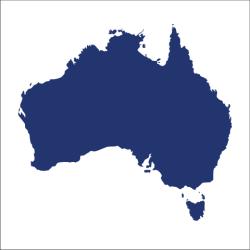
This project was funded by the Australian Government ($110,751). Australian Government funding was provided through the National Water Grid Fund.

The project provides an overview of the common water supply and water quality issues across remote communities.
Project overview
Australia is home to more than 1,100 diverse and culturally rich First Nations communities. Many of these communities face challenges in accessing clean affordable drinking water. This includes desert regions where groundwater is the only reliable source.
The project provides an overview of the common water supply and water quality issues across remote communities. The challenges are complex and include:
- identifying community needs and priorities
- ensuring there is local input into decision making
- the logistics involved in the supply and delivery of parts to remote locations, including factors such as poor road conditions
- capital costs and requirements – the cost of supplying water to remote communities can be higher than urban and regional centres
- heat and extreme weather conditions, including flooding, drought and impacts of climate change
- economic circumstances
- skills and resources available in the community for routine maintenance.
The National Water Grid Science Program funded CSIRO to undertake this review. The review looks at current, alternative and emerging water treatment technologies available. These technologies are needed to treat and deliver safe and reliable drinking water to remote communities.
Goals of the assessment
As part of this project, CSIRO conducted rapid desktop research over 10 weeks. This utilised existing evidence and research, and included:
- an overview of common water supply and quality issues across remote communities
- a summary of the current technologies used for water treatment, including case studies of where they are currently operating
- a summary of some relevant emerging technologies
- a framework to measure the effectiveness of technologies to deliver safe and reliable drinking water.
Different technologies provide different results at varying costs. They also must be matched against the needs of the community and the capacity of available resources and conditions.
Outcomes of the assessment
Providing drinking water to remote communities will involve a comprehensive and integrated approach.
The review does not recommend specific technologies for specific locations. A variety of water treatment methods are already used effectively in many remote communities. The suitability is different for each community, depending on their size and location. Suitability also depends on the existing water availability and quality. These current technologies include:
- disinfection
- desalination
- managed aquifer recharge
- organic and biological filtration
- coagulation and flocculation
- pH adjustment using calcite or lime
- ion exchange.
The 2 main issues for suitability of technology are the size of the community and the availability of support. Larger communities (100 to 500 people) often have a water service provider like a town or city. These communities have potential for options such as larger-scale water treatment plants. Smaller communities need treatment systems that are designed for lower water demand. These include lower-tech solutions that are reliable enough to perform with limited maintenance.
The review identified small scale technology suitable for individual households or small communities. These include point-of-use chlorination or UV disinfection.
Emerging technology has the potential to improve on currently used water treatment systems. This includes reducing costs, increasing efficiency, reducing operational risks and improving system lifespans. The review identified the need for emerging technologies to address specific challenges. These include technologies that improve current solutions or are new solutions that:
- reduce the need for chemical transport, handling and dosing
- provide more efficient desalination methods with a focus on reducing water wastage
- address disposal options for brines and other wastes, including safe disposal of uranium
- reduce energy consumption and integrating with renewable energy
- develop technology for treatment of extreme and emerging water quality parameters
- develop smaller and more transportable systems for temporary water treatment, these can be used while larger scale systems are being decided and developed
- develop systems that are robust and effective under extreme conditions or limited maintenance.
Further research and development recommendations were provided to address the above challenges. In particular, partnerships could help research development, including water service providers, researchers and commercial manufacturers.
A framework was also developed to rank current and emerging technologies against:
- the community and water supply context
- technical suitability of the technology
- capital costs and requirements
- operation and maintenance requirements and costs
- waste generation and management requirements
- technology readiness, including market competitiveness.
Key project benefits
Learn more
- Read more about this project on the CSIRO website.
- Learn more about our Science Program.

